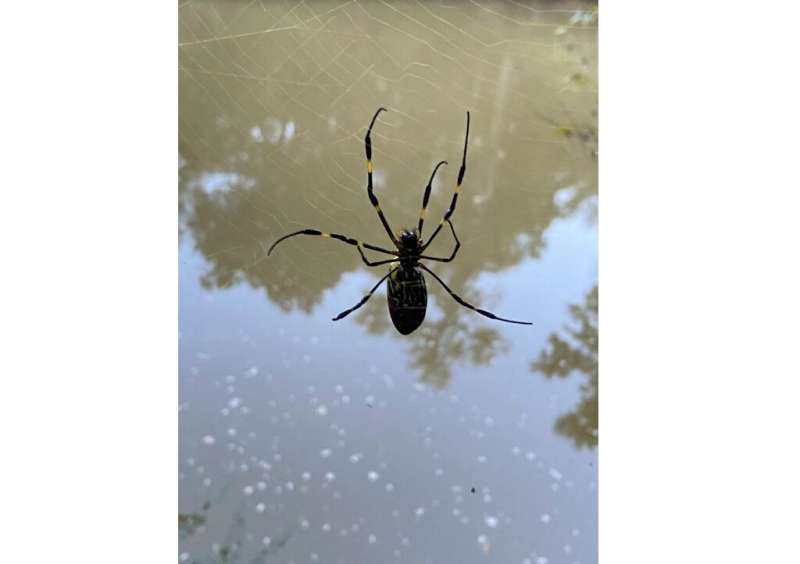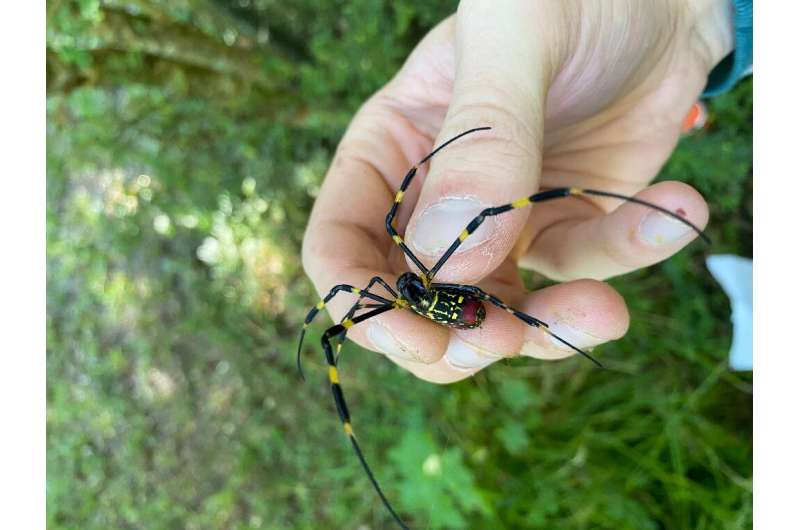
The Joro spiders have spread from Asia to the southern United States and are poised to colonize the country.
Scientists have been studying the arachnid invaders since they arrived in Georgia.
In a few short years, the golden webs spun by the bright yellow, dark blue and red spiders have become a common sight throughout the state.
Andy Davis, an ecologist at the University of Georgia, told Agence France-Presse that they got involved in the project because they fell in their lap.
They are all over my backyard here in North Georgia.
Davis compared the new resident to the golden silk spider, which came to the southeastern United States 160 years ago from the tropics.
He and his co-author found similarities but also differences between their relatives in a paper published in the journal Physiological Entomology.
The Joro spider has a higher metabolism and can survive brief freezes. They grow faster.
It is native to Japan, so it is not surprising that it can survive colder climates.
They can fly up to 100 miles, thanks to the spinning webs that act like parachutes and catch air currents.
The paper looked at records from iNaturalist and found that the range of the spider had already expanded to include the states of South Carolina, North Carolina and Tennessee.

There was a report from Oklahoma.
Joros would probably work their way up the coast on their own, but it will probably happen faster if they hitch a ride on vehicles.
Call for clemency.
They probably arrived in the US in the first place, either a female stowed away laid her eggs on a ship or an egg sac was brought over and hatched in the spring.
The spotted lanternfly, a native of Southeast Asia, decimates fruit trees and ornamental plants in the US state of Pennsylvania.
The Joros exploding numbers are not necessarily a cause for concern, argued Davis.
The golden silk spider is not causing any harm in the southeast. He said that the Joro could follow the same trajectory because it has been here so long.
It could provide a good meal for natives, such as mud dauber was, which hunt spiders. Local lizards could be beneficiaries.
The adult brown marmorated stink bug is one of the insects that Joros feed on.
They are not aggressive towards humans, and their fangs are not big enough to pose a threat, according to Davis, who called for clemency and understanding.
I don't think the Joros deserve to be killed like the spotted lanternfly because they are not out to get us. He said they were along for the ride.
There will be a new year in 2022.
Citation: Huge spiders to colonize US East Coast, but maybe it's a good thing (2022, March 11) retrieved 11 March 2022 from https://phys.org/news/2022-03-huge-spiders-colonize-east-coast.html This document is subject to copyright. Apart from any fair dealing for the purpose of private study or research, no part may be reproduced without the written permission. The content is provided for information purposes only.